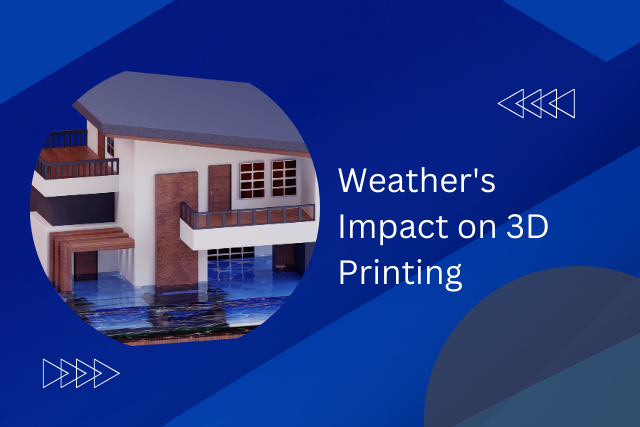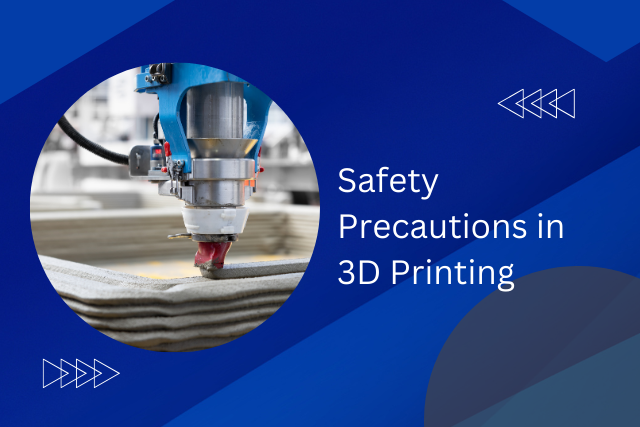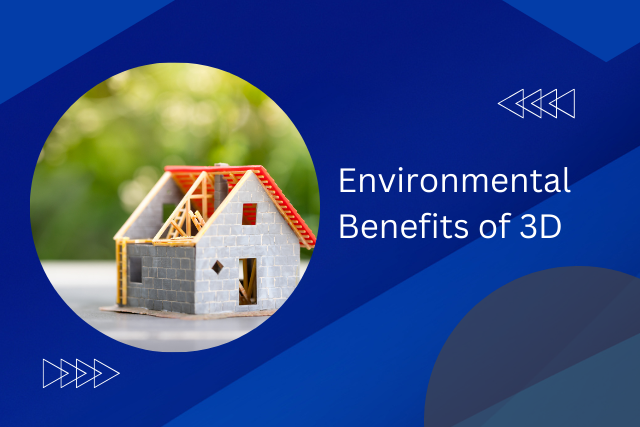Building a house using a 3D printer in less than 48 hours is a big deal. It’s a new way of making homes that’s faster and better for the planet. This method uses cool technology and new materials to speed up how fast a house can be built. It also lets people design houses in new and different ways, which is good for the environment. As we look at how this works, from starting the design to putting the house together, it’s exciting to think about all the new things that could happen in building homes. The future of making houses might change a lot because of this.
The Concept Unveiled
A new idea in building houses was shown recently. This idea is about making a house in less than 48 hours using a 3D printer. This is a big change for how we build houses and could help solve the problem of not having enough homes for everyone in a much faster way. By using 3D printing, building a house takes less time and work, making it possible for more people to have homes that are good quality but not too expensive.
This new way of building houses is not just different; it’s also better for the planet. It uses less materials, so there’s less waste, and it doesn’t harm the environment as much. Also, because 3D printing lets us change the design easily, people can have houses that fit what they want and like. They can decide how their homes look and feel, making these homes more special to them.
In short, this new idea in building houses with 3D printing could make it easier and quicker to build homes, make them less expensive, and allow people to have homes that are just right for them while also being better for the Earth.
Designing for Speed
Transitioning from concept to execution, the essence of ‘Designing for Speed’ hinges on the integration of rapid design techniques and efficiency in planning. This approach not only accelerates the construction process but also optimizes resource utilization, setting a new benchmark in the realm of sustainable architecture. By prioritizing these elements, we are on the brink of revolutionizing how homes are built, making the dream of affordable and rapid housing a tangible reality.
Rapid Design Techniques
Using fast design methods, people are making the process of creating buildings much quicker. Now, it’s possible to make 3D printed homes in less than 48 hours. This big change shows how powerful new ideas can be, making it easier and faster to plan, build, and live in different spaces. These techniques help with being quick, accurate, and flexible in building, letting architects and builders try new things.
| Technique | Benefit | Application |
|---|---|---|
| Modular Design | Scalability | Customization |
| Algorithmic Modeling | Efficiency | Precision |
| Real-time Simulation | Adaptability | Testing |
Efficiency in Planning
Using 3D printing technology to plan and build buildings has made the construction process much quicker. This method combines careful planning before the construction starts with the creative ideas of architects and the fast and accurate 3D printing. By making designs that work well with 3D printing, architects and engineers can get past old limits, starting a new time of building that’s quicker, better for the environment, and more flexible. This move towards better planning lets builders and designers make and complete projects with new freedom. It opens the door to a future where we can build faster and use fewer resources, creating many new opportunities in architecture.
Printing Process Explained
This new way of making 3D printed homes uses cool robots and a special kind of concrete. It can build houses in less than 48 hours, making them very strong and precise. This method is changing how we build houses, making it possible to do it faster, cheaper, and in a way that’s better for the planet.
Here’s a quick look at what makes this process special:
| Feature | Description | Benefit |
|---|---|---|
| Robotic Precision | Robots that are really accurate | Less waste, works faster |
| Specialized Mixture | Concrete made just for 3D printing | Buildings are stronger, dry faster |
| Layering Technique | Adding concrete in layers | You can have different designs, walls are strong |
| Speed of Execution | Houses done in under 48 hours | Builds are quick, makes a difference right away |
| Sustainability | Uses less materials and energy | Good for Earth, saves money |
This chart shows why this new way of building is exciting. It’s great for people who want to break free from old building methods, don’t want to wait long for their house to be built, and care about the environment. This technology is not just a small change in how we make houses; it’s a big jump towards making home-building faster, eco-friendly, and more about giving people freedom in how they live.
Material Innovations
Exploring more into 3D printed homes, new materials are very important for making these homes strong and good for the environment. People who create and design are always looking for new ways to make building materials better. They are creating new composites that help the environment by reducing harm and are also very strong against natural events like earthquakes. For example, geopolymers are a new kind of material that is better for the planet than regular concrete and keeps homes warmer or cooler.
Also, using recycled materials in 3D printing shows a strong support for reusing and reducing waste. These advanced materials are made to work really well, making sure that future homes can be built quickly and are better for the Earth. The smart work behind these new materials is changing how we build homes, showing that 3D printing can help make homes that are easy to get, good for the planet, and don’t cost too much.
As we keep looking into this area, these new materials promise a future where designing homes is flexible, good for the planet, and saves money.
Assembly and Finishing
After the main structure is built, the next steps bring 3D-printed homes to life. This is when the home starts to look real, thanks to the hard work of architects and engineers. Their plans make a simple structure into a cozy place to live. Using new types of materials helps put the house together faster, cutting down the time it takes to build. Windows, doors, and the roof are put in place carefully, making sure the house looks good and works well.
Next, the focus shifts to making the inside of the house look nice. Walls can be made smooth or given a special texture, depending on what the homeowner likes. The electrical and plumbing systems are added very carefully. This part of the process is about being quick but also letting the homeowner choose special touches that make the house their own.
3D printing technology makes it possible to add cool designs and patterns right into the structure of the house. This gives the house a unique look that you can’t get with traditional building methods. The steps of putting together and finishing a 3D-printed home are about mixing new ideas with personal style. This marks a new way of building homes, where technology helps people create a place that truly feels like theirs.
Sustainability Benefits
The advent of 3D printed homes introduces a transformative approach to construction, marked by its significant sustainability benefits. By precisely deploying materials only where needed, this technology drastically reduces waste, while also lowering overall energy consumption during the build process. Such innovations signal a promising shift towards more eco-friendly and efficient housing solutions.
Reduced Material Waste
Reduced material waste is a key benefit of 3D printed homes for the environment. This method uses technology to make sure that materials are used very carefully, almost getting rid of extra waste that usually happens with the old way of building houses. This helps save important resources and cuts down a lot on the waste that would end up in landfills, helping to keep our natural ecosystems safe. By using this new way of building, we’re not just making homes, but we’re also making a future where harming the environment is less of a problem. This move towards using resources wisely shows a strong support for eco-friendly progress, showing that technology and nature can work together to make places to live that are better for the planet.
Lower Energy Consumption
3D printed homes help save a lot of energy, making it easier to live in a way that’s good for our planet. This new way of building homes is careful and smart, using less energy from the start. The materials used also keep homes warmer or cooler for longer, which means less energy is needed over time.
Here’s a simple table showing how 3D printed homes use less energy:
| Feature | Benefit |
|---|---|
| Careful Material Use | Uses less energy in making and moving |
| Smart Building | Uses less energy while building |
| Better Insulation | Needs less energy for heating and cooling |
| Green Materials | Lowers overall energy use |
| Design That Helps | Makes use of the sun and air to save energy |
This shows that 3D printed homes can really help in saving energy. It means people can live in a way that costs them less in energy bills and is better for the Earth.
Future of Home Building
3D printing is changing how we build homes, making it much faster and cheaper. This technology helps us make unique designs without spending a lot of money or time, like we do with old building ways. It’s also better for the environment because it doesn’t waste as much material.
Since 3D printing can work on any project size, from small houses to big buildings, it opens up new chances for cool designs and useful features we couldn’t think of before. As these printers become easier to get and cheaper, building homes will move towards being more about what we want, efficient, and good for the planet.
In the future, adding smart technology to 3D printed homes will make them even better. Homes will be built not only quicker but also smarter, saving energy and meeting our needs better. The way we build homes is heading towards being more free, creative, and caring for the environment, all thanks to 3D printing.
Conclusion
The creation of 3D printed homes that can be built in less than 48 hours marks a big change in how we design and build houses. This new way of building homes is faster and brings new improvements in the materials used and in being kind to the environment. By using less and making the most of what we have, 3D printing in home construction looks forward to a future where homes are made more quickly, can be changed to fit what people want, and are better for our planet. As this technology gets better, it could change how we think about making homes, making them easier to get, more personal, and more eco-friendly.






